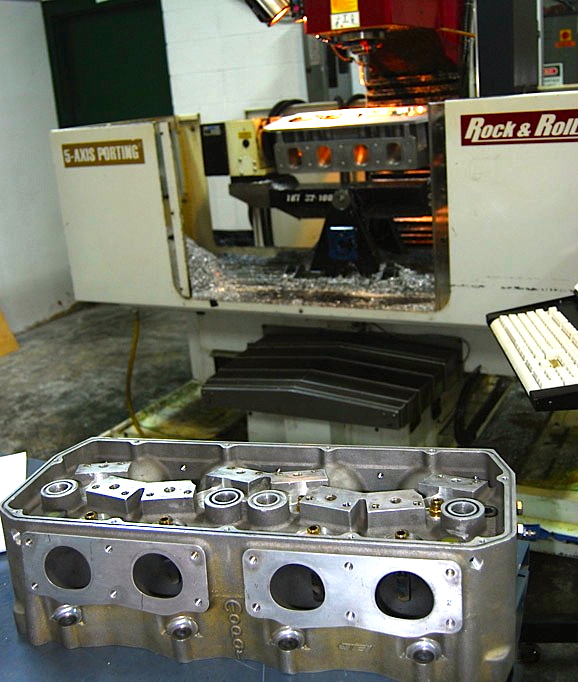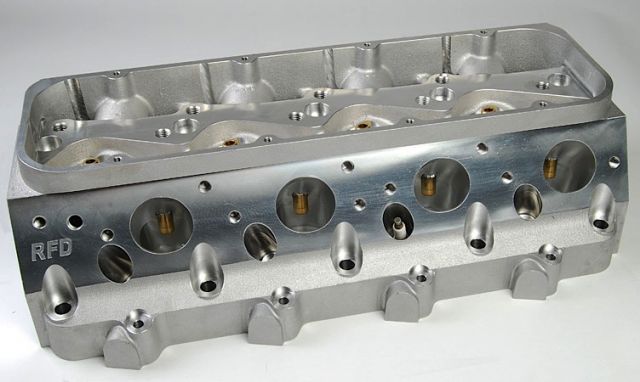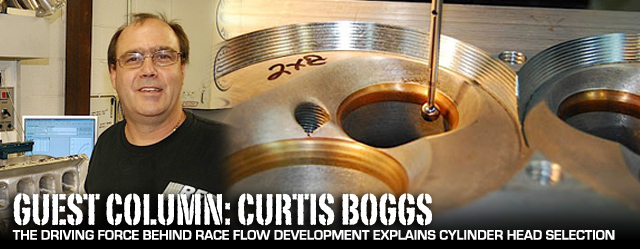Curtis Boggs runs Race Flow Development [2], a cylinder head shop that specializes in custom port design and engineering. Boggs is an expert in stock car, Pro Stock and motorcycle cylinder head work, using CAD and CFD modeling to build designs specific to each engine application. — Editor
Hi gang, welcome to EngineLabs [3]. I hope you are as excited about this new source of engine information as I am.
As a custom cylinder head designer, I often get asked: How do I know what head is right for my application? How do I choose from the many on the market these days? This is an issue, no doubt, as everybody and their brother has a 5-axis CNC machine, and many claim to be the second coming of some out-of-this-world induction deity who can alter the laws of physics. So many choices. While no one can alter the laws of physics, good induction engineers comprehend it more then most others.
 [4]It may help to understand the development process needed to bring a complete head design to the racing community. Any project has to start with a plan. With a plan, you need a goal. Seems simple, but important steps, all the same. The casting chosen as the starting point has to have the geometry to house the port, locations and other design factors to feed the project.
[4]It may help to understand the development process needed to bring a complete head design to the racing community. Any project has to start with a plan. With a plan, you need a goal. Seems simple, but important steps, all the same. The casting chosen as the starting point has to have the geometry to house the port, locations and other design factors to feed the project.
Which casting?
Let’s take the 18-degree Chevy small-block head. There are several casting choices around which to build a port program for a specific goal. Why choose one over the other? Geometry. Each of the castings from manufacturers like Dart [5], Brodix [6] and Edelbrock [7] has pros and cons for specific projects. Let’s say we are building a big-inch nitrous killer and need massive port area. While some of these manufacturers offer custom versions of their castings with shaved cores and material added where you may need it, some don’t. Water core is very critical of course. You don’t want to start cutting your latest and greatest creation to find it only makes holes where you don’t want them.
Once you have your foundation from which to cut ports and chambers, it’s time for the process that has been discussed 1,000 times before — port design. For me, of course, I always do my math first. I am a formally trained engineer, so I calculate the airflow demand of a single cylinder in our project at the given rpm we want to run. From there, I can calculate the proper valve and port sizes all the way back up the induction system. Armed with that data I know what size to make the ports.
In addition to size, the shape of the port is also a consideration that affects the choice of castings. Port shape plays a larger role in producing power then any other single element. A port with a poorly shaped floor and short turn can have the air/fuel separate and become turbulent. I typically will do several variations of tests to verify different areas. Wet flow is great for showing fuel issues, velocity tests, flowing strings etc, .. all important.
Dyno testing followed by track testing is the only way to truly verify a program.
— Curtis Boggs
Even after this very condensed overview, you’re still left with the same question: How do I choose a head? Well you have to use part of the same process if you want to do it yourself. You will need to get a program like PipeMax or use some of the better online calculators to estimate your proper port sizes. This can be a tricky thing however. Port area is never quite as simple as they make it sound on some internet forums. These are tuning tools and it’s very important to remember that. What might be a perfect port volume to one might be all wrong for another.However, there is no substitute for real world testing. Dyno testing followed by track testing is the only way to truly verify a program.
 [8]
[8] [9]Several things can affect the “personality” of your build. Cam timing is a huge factor, as we all know. Big heads and short duration cams can work very well in some cases. Exhaust-lobe tuning to build cylinder pressure; small, fast ports and longer cam timing can also work.
[9]Several things can affect the “personality” of your build. Cam timing is a huge factor, as we all know. Big heads and short duration cams can work very well in some cases. Exhaust-lobe tuning to build cylinder pressure; small, fast ports and longer cam timing can also work.
Have a plan
The point to all of this is to really know your goal and plan it out well. Choose the professionals in their chosen field to help you plan. Cylinder head design at the upper ends of performance can be complex. Sometimes the help of a seasoned veteran is the only way that will get you where you want to go. Just picking something out of catalog or that you’ve seen on a similar combination doesn’t guarantee success.
I hope that I’ll have the opportunity in the future to cover each part of the process, start to finish and in detail of what it takes to go from concept to completion. In other words, a behind-the-curtain peek at Race Flow Development and the world of port design and 5-axis CNC porting.

